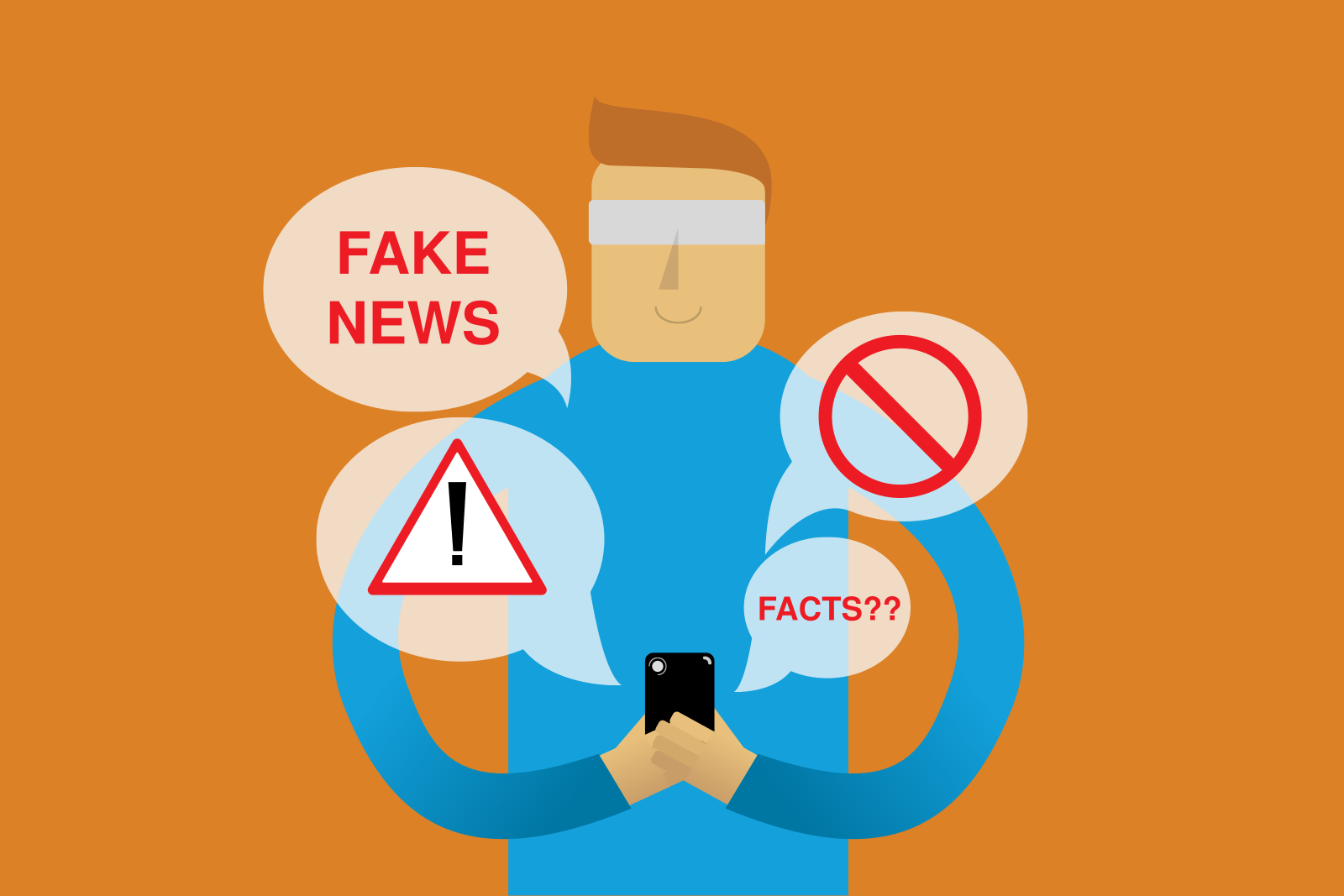Through the last PTI government and the political turmoil which it left in its wake, fake news and misinformation has been on the rise. Is this phenomenon endemic to Pakistan? Are we, as a nation, particularly more susceptible to being caught in the crossfire of modern political propaganda?
In March 2022, when the PDM coalition tabled the no confidence motion against Imran Khan, a gradually swelling tide of fake news turned into a tsunami of internet propaganda projecting from both sides. There appears to be another wave of misinformation campaigns, following up with the fake news epidemic that engulfed Pakistan during the peak months of the COVID-19 pandemic.
Only a handful of genuine fact checkers have been dedicatedly working against what seems like an uphill task of fighting fake news. In that way, the cause faces as much obstruction in society as the fight against climate change. From accurately estimating the number of attendees in a political jalsa, to explaining doctored videos and images and those used out of context, to fact checking statements made by politicians against each other, fact checking has become the most essential part of news coverage.
This is why what we do, matters.
Jalsas and their size
On March 27, 2022, former PM Imran Khan addressed a large crowd at the Islamabad Parade ground. When Khan labelled it the largest public gathering in Islamabad in Pakistan’s history, several counter points surfaced on the platform. From misleading information PTA’s data collection on active mobile phones in the locality.
On May 6, 2022, images and videos from Maryam Nawaz Sharif’s jalsa in Fateh Jung also went viral on Twitter. Where some videos slandered the party for not being able to bring out enough people on the streets, some lauded the PMLN for a ‘powershow’.
A large number of tweets use misleading images from different points in various rallies and compare crowd sizes directly. This is a very recurrent theme in political fact checking and recently, a lot of politically motivated social media users claim to be “fact checking” claims regarding crowd sizes through comparing pictures.
However, a more accurate methodology would be to follow a step by step procedure of estimating the size of the ground or the vicinity of the location where a political rally is held, then reviewing aerial images reported by varying media houses (ARY, GEO, Dunya etc) and applying different methods of footfall estimation based on area covered. A tool most commonly used by fact checkers is MapChecking, developed by a French developer, Anthony Catel.
Images and videos: doctored or out of context
Fabricated images and videos constitute a range of fake news elements which are shared on Twitter, Facebook, WhatsApp and Instagram. Either clips and photographs from the past are reposted in an invalid context to propagate or insinuate a specific political perception or simply images and videos are altered to give it a renewed meaning and then shared widely to extend the intended political messaging.
A viral image of a broken ATM went viral and PMLN supporters misused it in the current political context to exaggerate the extent of damage and destruction that was carried out by rogue PTI supporters in Islamabad this week. Earlier in March, right after Imran Khan’s visit to Russia, a doctored video of Putin showed him promising an oil pipeline from Russia to all the way to Pakistan, which did not happen. A doctored message attributed to Justice (R) Nasira Iqbal was circulating the internet in April and an altered video of Imran Khan was circulating in the beginning of May, claiming that he was bowing down in front of a Jewish politician.
These images and videos can be fact checked by reverse image searches, through the fact checking plugin called InVID and through online tools like Forensically which allows you to spot the areas in an image which show signs of editing or any kind of fabrication.
Political statements
A doctored video went viral claimed that through the Ehsas program Prime Minister Shehbaz Sharif has announced a 36,000 PKR “eidi cash” reward. However, it was falsely edited to look like a GEO News headline. Similar political statements, like Bilawal Bhutto’s Kanpay Taang Rahi Hain video and the viral Facebook post which claimed that Fatima Bhutto released a statement in Imran Khan’s favor in the first week of April.
Misconstrued statements publicized in situations of extreme political turmoil such as the current constitutional crisis at hand, are able to increase polarization on social media platforms and pivot the conversation on misinformation in the direction that it is labelled and counter labelled by opposing political groups to slander the other.
Another significant aspect of this discussion is a recent surge in what can be called “fake checkers” . Much like the @Pk_FactChecker handle on Twitter, made by the Ministry of Information and Broadcast during Imran Khan’s government, other small fact checking outfits have popped up, which minimize the significance of transparency and fairnes in terms of verifying misinformation.
Introducing the Current Check
In light of how common fake news has become, and how often we are made to believe it is true, The Current is set to launch their sister website, The Current Check where we aim to uphold the International Fact-Checking Network (IFCN) Code of Principles and set a standard for consistent and accurate fact checking to fight the flood of misinformation.
Through this platform we will also initiate accessible and widely disseminated video fact checking which not only overcomes the issue of English news media’s exclusion of the masses but also the fact that digital video content has a significantly higher shareability than a fact check article.
Our aim is to give our followers accurate information, that is checked on international guidelines. While we know that people follow and believe what they want to believe, a fundamental right, we aim and will provide accurate information that is truthful, with information to back it up.







